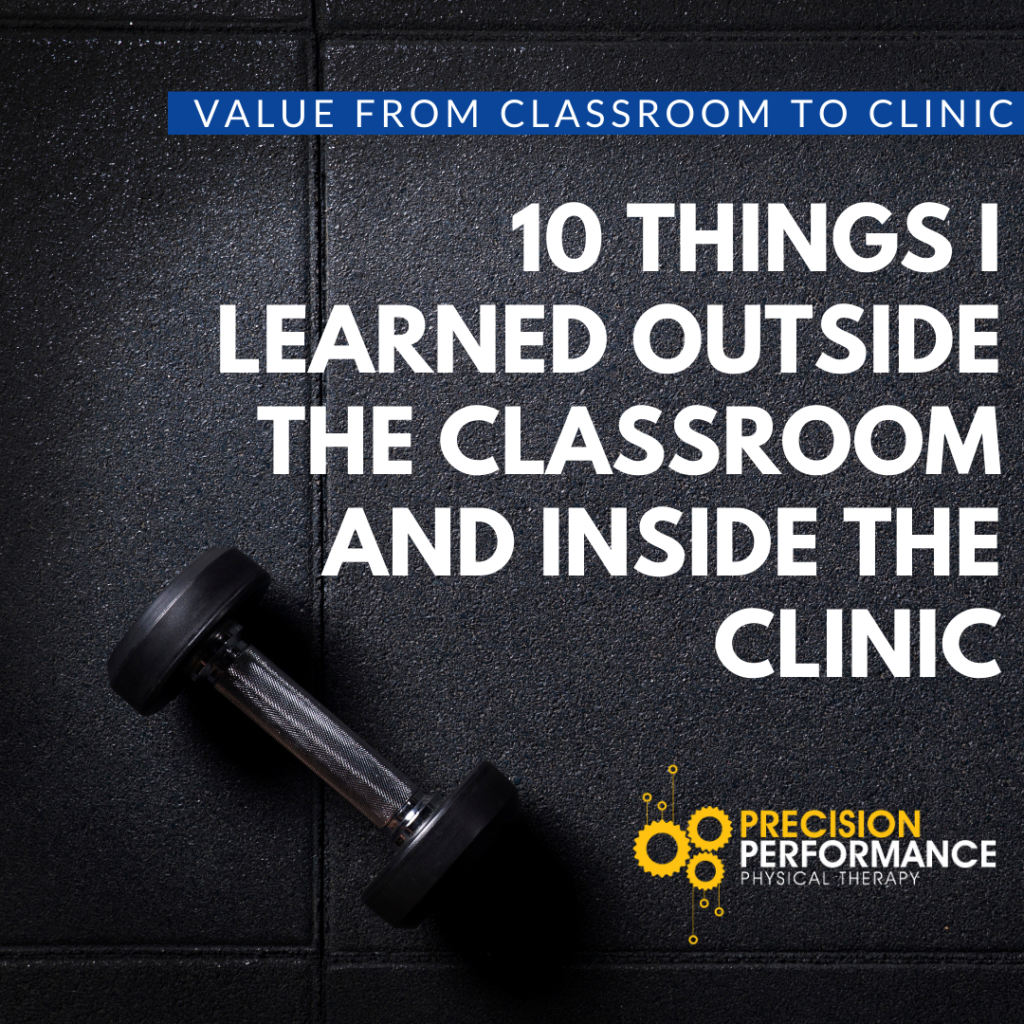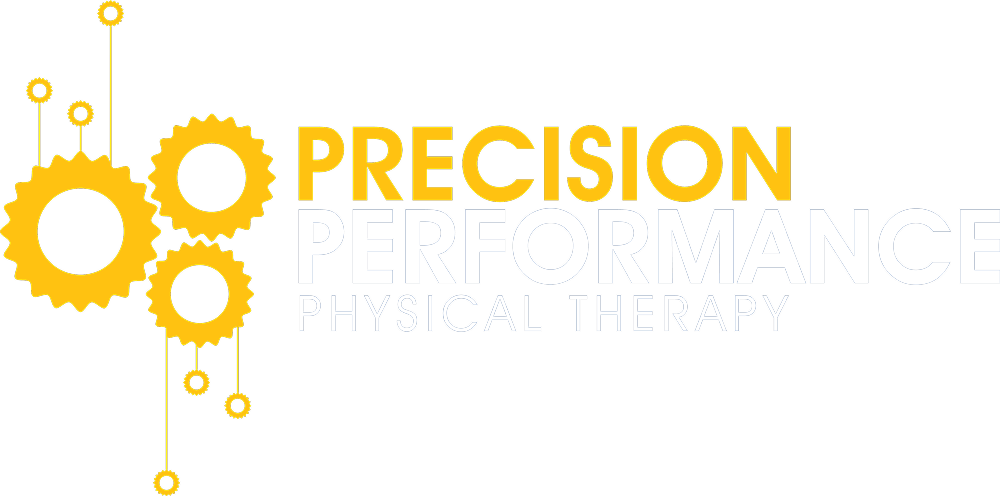10 Things I Learned Outside the Classroom and Inside the Clinic

Today’s blog comes to you from Dr. Nisha Meyer. Dr. Meyer breaks down the top ten lessons she has learned while working in a Physical Therapy Clinic.
As I reflect on the lessons I have learned in my career, I feel grateful to reflect on my journey as a student physical therapist to a new clinician. Though the memories of intense studying, fear of failure, and self-reflection still feel very palpable, I am appreciative of my trials and triumphs during my academic years. There is no denying, a solid academic foundation is essential. We have an obligation to learn how to screen and ensure safety for our patients. However, those years filled with late night practicals, group study sessions, and heavy textbooks do not compare to the lessons I have learned from my now 8 am-6 pm work life.
Here are my top 10 lessons I value from the classroom to the clinic:
Let your patient lead by listening.
This is an easy one for people to assume- just listen, right? But I mean, put yourself in this person’s shoes. Don’t just hear the words that come out of their mouth. What burden does this injury have on their life? What does their fitness community look like, and can you imagine having to take a step back as well?
As a student PT, instead of genuinely listening to my patient’s message, I would hyper-focus on MY next move. I would fixate on what subjective question I should ask and what region I should screen. With more experience, I have started to focus less on a checklist structure and more on building a relationship with my patients. As they open up, we learn so much more about what they can and cannot do. Watch that. Treat that. I allow their story to build my subjective conversation, physical exam, and plan of care.
Less is more.
Especially in the performance, sports-based setting, it can become easy to fall accustomed to the newest trends, gadgets, and fancy exercises. Like anything, we must do the basics well. I focus on building from simple, transferable movements that my patient needs to do in their everyday life. The benefits are more relatable to their goals and long-lasting compared to a short-term, complex movement pattern or arbitrary technique.
Mistakes will happen; how you respond to them is more important.
We are humans, working with humans- mistakes happen. Unlike school, where there would be a question on a test and you could move on or follow up for a simple answer, I found myself reflecting and over-thinking about my interactions that I wish had gone smoother. Though it is important to look back and analyze situations, how you show up and use these failures to fuel your potential to do better means more.
People care that you care.
As a student physical therapist, I was fearful that my age and lack of experience would be easily shown. I used to believe that confidence should be portrayed with unlimited knowledge, lack of silence during sessions, and plenty of education. At the end of the day, no matter how much you know, if the patient doesn’t trust or believe in you, your treatment will not be successful. Also, silence can be a powerful tool. Let the patient reflect and find self-efficacy with your non-verbal support.[/et_pb_text][/et_pb_column]
Confidence with uncertainty.
Thought you had a cluster of injuries you knew, but then the patient presents completely different? Yup. Welcome to the gray, and embrace it. Students like me often would dread not knowing a diagnosis or the right “hard skills” to perform next. Then I realized that oftentimes, the actual diagnosis doesn’t matter. Embrace what we do not know (i.e., exact pathology, reason for pain, etc) and empower yourself and your patient with what you DO know. Highlight the positives and treat what you see confidently. There is strength in being honest and flexible.
Value of time.
School doesn’t teach you how to manage daily treatments with documentation, along with programming/HEPs for patients, and why not throw in some continuing education- ALL within a 24-hour day. Time is valuable, and it is your worth. Likewise, when a patient gives you an hour of their day, think about what you can do in that time to be present and make meaningful change. Not only is their time inside the clinic important, but your time outside is just as vital for their care! Make sure you continue to build your capacity for a stressful day by surrounding yourself with people who support you, holding on to healthy habits, and taking time to reflect on your own growth.
Communication cures.
No time in school can prepare you for the varying patient presentations, personalities, and experiences with physical therapy. I have found our words to have a huge impact in de-threatening fearful situations, empowering patients to be resilient, and a useful skill in re-shaping expectations. Be open to meeting your patient where they are at, adapt, and connect.
Perfect is not a goal.
This is not a test, there is no grade. There is no such thing as a “perfect” evaluation, session, or exercise. Especially for my fellow A types out there, embrace your success as your patient’s accomplishments- big or small.
Look to learn.
Whether it’s a co-worker, patient, mentor, or even mentee, we can learn from each other’s strengths. As a clinician, it is easy to get stuck in your corner or bubble of the clinic- ask for help and create opportunities to get feedback.
Be humble and hungry in healthcare.
The human body is complex, and very few people are as they seem to be in the textbooks. As clinicians, we commit to being lifelong learners, to being patient-centered, and to challenging even our core beliefs. This means taking time to analyze research, ask questions, and be willing to prove yourself wrong. That is how we elevate the standard of our field and press forward to give optimal care. Be hungry to change what feels complacent and fight for your people, including patients and fellow providers! Check out Precision Performance’s social media platforms for more great tips from Dr. Meyer and our other talented therapists.
Facebook: @myprecisionperformancept
Instagram: @precisionperformance.pt
Tik Tok: @precision.performance.pt